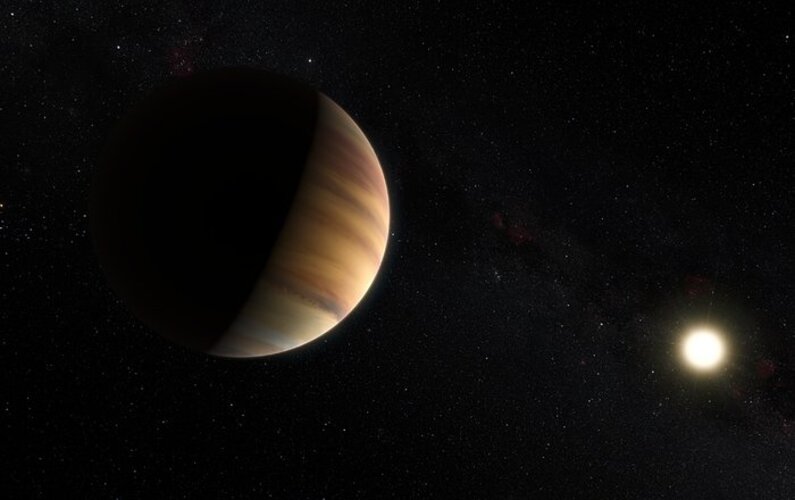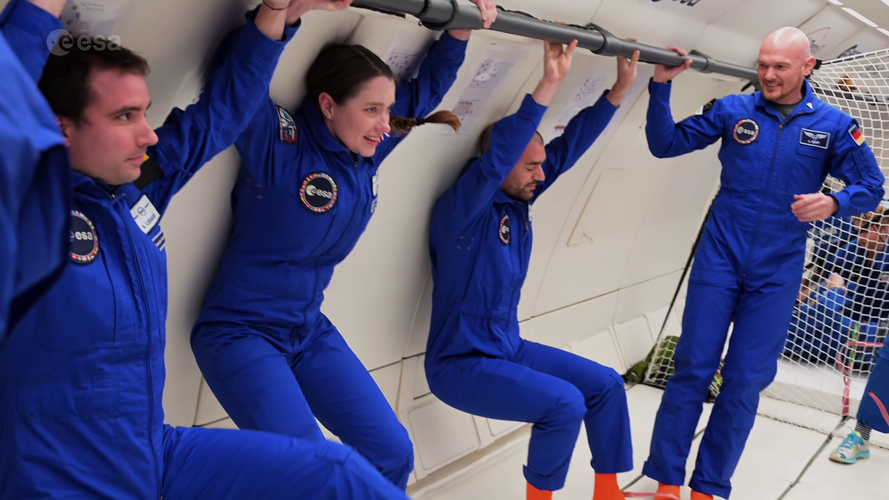MDA Space awarded extended ISS robotics contract
Monday, 22 April 2024 12:38 MDA Space (TSX: MDA) has been granted a $250 million contract extension by the Canadian Space Agency (CSA) to continue its support for robotics operations aboard the International Space Station (ISS). The extended contract, effective from 2025 to 2030, assigns new responsibilities to MDA Space, including the role of robotics flight controllers.
"Robotics flight controllers are the pilots i
MDA Space (TSX: MDA) has been granted a $250 million contract extension by the Canadian Space Agency (CSA) to continue its support for robotics operations aboard the International Space Station (ISS). The extended contract, effective from 2025 to 2030, assigns new responsibilities to MDA Space, including the role of robotics flight controllers.
"Robotics flight controllers are the pilots i Air Force Leadership Stresses Modernization and Timely Congressional Funding
Monday, 22 April 2024 12:38 During a House committee meeting on April 17, Secretary of the Air Force Frank Kendall, along with top leaders from the Air Force and Space Force, emphasized the urgent need for Congress to provide timely and predictable funding to defend the nation effectively against modern threats.
Kendall, Air Force Chief of Staff Gen. David W. Allvin, and Chief of Space Operations Gen. Chance Saltzman
During a House committee meeting on April 17, Secretary of the Air Force Frank Kendall, along with top leaders from the Air Force and Space Force, emphasized the urgent need for Congress to provide timely and predictable funding to defend the nation effectively against modern threats.
Kendall, Air Force Chief of Staff Gen. David W. Allvin, and Chief of Space Operations Gen. Chance Saltzman Desert soil microbes adapt to thrive in extreme dry conditions
Monday, 22 April 2024 12:38 Scientists from the University of Vienna have shed light on how desert soil bacteria survive and thrive under the extreme conditions of prolonged droughts and intermittent heavy rainfall. Their findings, led by microbiologist Dagmar Woebken at the Centre for Microbiology and Environmental Systems Science (CeMESS), were recently detailed in Nature Communications.
Covering over 46% of the Ea
Scientists from the University of Vienna have shed light on how desert soil bacteria survive and thrive under the extreme conditions of prolonged droughts and intermittent heavy rainfall. Their findings, led by microbiologist Dagmar Woebken at the Centre for Microbiology and Environmental Systems Science (CeMESS), were recently detailed in Nature Communications.
Covering over 46% of the Ea Momentick raises funds to advance satellite-based GHG emission tracking
Monday, 22 April 2024 12:38 Momentick, a leader in emissions intelligence, has successfully raised $6.5 million in seed funding to enhance its emission intelligence algorithm and extend its market reach. The investment round was spearheaded by Chartered Group Japan and TAU Ventures, with additional contributions from private investors.
Methane, primarily found in natural gas, is an odorless and colorless gas that can
Momentick, a leader in emissions intelligence, has successfully raised $6.5 million in seed funding to enhance its emission intelligence algorithm and extend its market reach. The investment round was spearheaded by Chartered Group Japan and TAU Ventures, with additional contributions from private investors.
Methane, primarily found in natural gas, is an odorless and colorless gas that can Space Operations Command takes control of Space-Based Infrared System
Monday, 22 April 2024 12:38 The United States Space Force's Space Systems Command (SSC) has successfully transitioned the control of the Space-Based Infrared System (SBIRS) Baseline Release (SBR 23-1) to the Space Operations Command after completing a successful trial period. This transfer to the Space Operations Center's Missile Warning Mission Area Team marks a significant milestone in the project's deployment.
"Th
The United States Space Force's Space Systems Command (SSC) has successfully transitioned the control of the Space-Based Infrared System (SBIRS) Baseline Release (SBR 23-1) to the Space Operations Command after completing a successful trial period. This transfer to the Space Operations Center's Missile Warning Mission Area Team marks a significant milestone in the project's deployment.
"Th Vertical Future to develop crop-growing systems with UK Space Agency funding
Monday, 22 April 2024 12:38 Vertical Future, a specialist in vertical farming technology and production based in the UK, has been awarded a new grant of GBP 1.5 million to undertake the second phase of the "Autonomous Agriculture for Space Exploration" project. The program is set to adapt Vertical Future's controlled-environment-agriculture systems for use in prototype Low Earth Orbit growing systems aboard the first comme
Vertical Future, a specialist in vertical farming technology and production based in the UK, has been awarded a new grant of GBP 1.5 million to undertake the second phase of the "Autonomous Agriculture for Space Exploration" project. The program is set to adapt Vertical Future's controlled-environment-agriculture systems for use in prototype Low Earth Orbit growing systems aboard the first comme Evidence of long term human occupation in lava tube cave in Saudi Arabia
Monday, 22 April 2024 12:38 A recent interdisciplinary archaeological project has uncovered significant new evidence about ancient human life in Arabia, particularly from studying caves and lava tubes, which have been less explored for archaeological evidence. This effort was spearheaded by Griffith University's Australian Research Centre for Human Evolution (ARCHE), in partnership with international teams.
The resea
A recent interdisciplinary archaeological project has uncovered significant new evidence about ancient human life in Arabia, particularly from studying caves and lava tubes, which have been less explored for archaeological evidence. This effort was spearheaded by Griffith University's Australian Research Centre for Human Evolution (ARCHE), in partnership with international teams.
The resea Satellite technology from Surrey University aids Mauritius in illegal fishing detection
Monday, 22 April 2024 12:38 The Mauritius Research and Innovation Council (MRIC) has teamed up with the University of Surrey to tackle illegal fishing using satellite technology. The Nereus project employs satellite imagery combined with ship location data, enhanced by artificial intelligence to identify potential illegal activities by monitoring maritime movements.
Dr. Raffaella Guida, a specialist in Satellite Remo
The Mauritius Research and Innovation Council (MRIC) has teamed up with the University of Surrey to tackle illegal fishing using satellite technology. The Nereus project employs satellite imagery combined with ship location data, enhanced by artificial intelligence to identify potential illegal activities by monitoring maritime movements.
Dr. Raffaella Guida, a specialist in Satellite Remo ESA astronaut class of 2022 graduation ceremony replay
Monday, 22 April 2024 08:30 Video:
00:57:15
Video:
00:57:15
Watch a replay of the ESA astronaut class of 2022 graduation ceremony.
ESA astronaut candidates Sophie Adenot, Rosemary Coogan, Pablo Álvarez Fernández, Raphaël Liégeois, Marco Sieber and Australian Space Agency astronaut candidate Katherine Bennell-Pegg received astronaut certification at ESA’s European Astronaut Centre on 22 April 2024. This officially marks their transition into fully-fledged astronauts, ready and eligible for spaceflight.
The group was selected in November 2022 and began their year-long basic astronaut training in April 2023.
Basic astronaut training provides the candidates with overall familiarisation and training in various areas, such as spacecraft systems, spacewalking, flight engineering, robotics and life
Sailing among the stars – Gaia's role in discovering distant worlds
Monday, 22 April 2024 07:00
Have you ever looked up at the night sky and wondered if there are other planets out there beyond our Solar System?
Highlights from ESA basic astronaut training
Monday, 22 April 2024 07:00 Video:
00:02:37
Video:
00:02:37
ESA's newly graduated astronauts reach the end of one year of rigorous basic astronaut training. Watch the key moments during the journey of Sophie Adenot, Rosemary Coogan, Pablo Álvarez Fernández, Raphaël Liégeois, Marco Sieber, and Australian Space Agency astronaut candidate Katherine Bennell-Pegg. Selected in November 2022, the group began their training in April 2023.
Basic astronaut training provides the candidates with an overall familiarisation and training in various areas, such as spacecraft systems, spacewalks, flight engineering, robotics and life support systems as well as survival and medical training. They received astronaut certification at ESA’s European Astronaut Centre on
10 ways Earth is interconnected
Monday, 22 April 2024 05:55
On this Earth Day, we reflect on the importance of protecting our planet for future generations. Understanding the Earth system and the complex interactions that shape our planet is paramount for addressing environmental challenges, mitigating climate change, preparing for natural disasters, managing resources sustainably and conserving biodiversity.
Each component of the Earth system – from the atmosphere and oceans to land surfaces and ice sheets – influences and interacts with one another in complex ways. ESA works all-year round to provide satellite data to monitor the health of our planet. Here are 10 examples
BlueHalo wins $24 million Air Force contract for research and analysis of satellite vulnerabilities
Sunday, 21 April 2024 10:06






